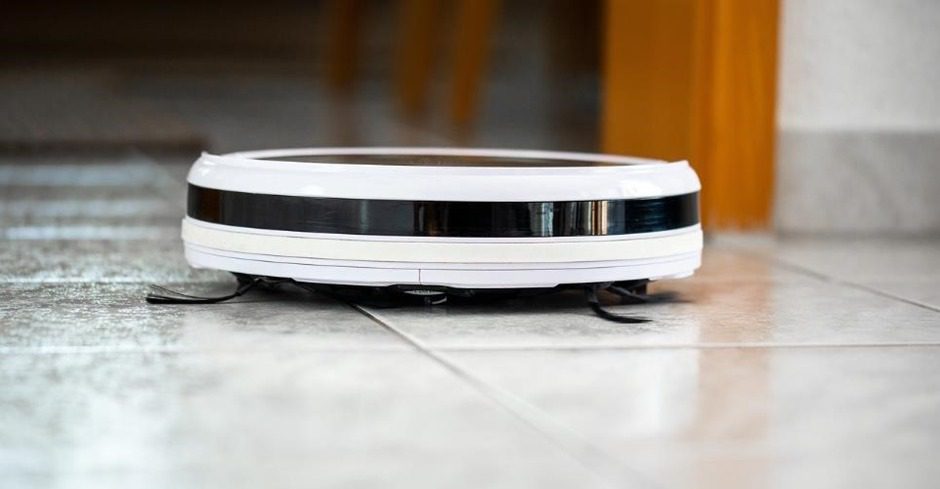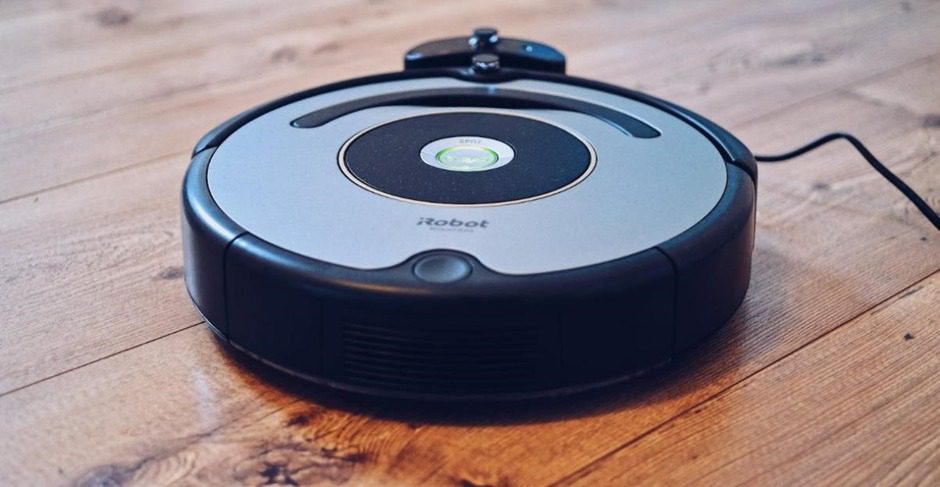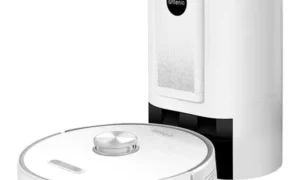Well hello there, tech enthusiasts! Welcome to a fresh episode of “Exploring Innovations”. Today, we’re diving into the fascinating realm of robotic vacuum cleaners – a domain where innovation meets daily chores. The key players? Shark and iRobot’s Roomba. The goal?
Making our lives easier with a touch of technology. Let’s get into the nuts and bolts, shall we?
Shark and iRobot: Movers and Shakers of Robotic Cleaning
Before we start, let’s get some context. Roomba, produced by iRobot, and Shark are pioneers in the robotic vacuum world, churning out impressive models one after the other. They’re like the Beatles and the Rolling Stones of home cleaning—different styles, same rocking impact. Now, let’s see what makes these gadgets tick.
iRobot Roomba: A Technological Powerhouse
Roomba is known for pushing boundaries, incorporating cutting-edge tech to transform the robotic cleaning experience. Their models boast features that seem plucked right from a sci- fi novel.
Firstly, there’s the smart mapping technology, known as iAdapt for older models and vSLAM for newer ones. These systems allow Roombas to scan and memorize your home’s layout, creating efficient cleaning paths. It’s as if your vacuum has its own internal GPS!
Then there’s the dirt detect technology, a feature that senses high-traffic or dirtier areas and focuses more cleaning efforts on them. It’s like having a cleaner with Sherlock Holmes’s detection skills!
Roomba’s pièce de résistance is the automatic dirt disposal featured in higher-end models like the Roomba j7+ and S9+. Imagine a robot vacuum that not only cleans your floors but also empties its own bin into a base station. Talk about self-sufficiency!
Moreover, Roomba robot vacuums offer seamless integration with smart home devices like Amazon’s Alexa or Google Home. Just with your voice, you can command your Roomba to start cleaning. Cool, isn’t it?
Considering the upcoming Prime Day, you can soon purchase expensive Roomba robotic cleaners at a very pleasant discount. Detailed comparison of models on sale, you may review on the Robotbox websit
Shark: The Efficient Innovator
Now, don’t think Shark is just playing second fiddle. It might not match Roomba’s tech-level, but Shark brings solid innovations to the table.
One standout feature is Shark’s brushroll design. They’ve developed a self-cleaning brushroll that’s brilliant at picking up hair without getting tangled— a godsend for pet owners!
Then there’s the Shark IQ Robot’s self-emptying base, similar to Roomba’s, but at a significantly lower price point. It’s proof that Shark is committed to providing high-tech features at a budget-friendly cost.
On the navigation front, Shark robot vacuums use an array of sensors to efficiently clean your home and avoid obstacles. They may not map your home like Roomba, but they are quite capable of getting the job done.
Shark hasn’t missed the smart home train either. Their robot vacuums can connect to Wi-Fi and work with Alexa or Google Home. So, you can kick back and boss your vacuum around with just your voice.
Innovations in Filters and Brushes

Now, let’s not overlook the less flashy, but equally important innovations in both Shark and Roomba robot vacuums—the filters and brushes. Both brands have optimized these components to handle everything from fine dust to larger debris, ensuring they pick up as much dirt as possible.
Roomba uses dual multi-surface rubber brushes that flex and adjust to stay in constant contact with floors. Combined with high-efficiency filters, it’s a one-two punch against dirt.
Shark, meanwhile, utilizes a combination of helix-pattern, high-tensile bristles, and strong suction to get rid of debris. Its filters are designed to capture dander and allergens, making Shark vacuums a great choice for homes with pets.
App Control and Customization
In the era of smartphones, it’s no surprise that both Roomba and Shark have embraced app connectivity. Through their respective apps, you can start, stop, or schedule cleanings, set no-go zones, and even get real-time updates on cleaning progress.
Roomba’s iRobot Home App even allows you to save multiple floor maps, perfect for multi- story homes. It’s like giving your vacuum a touch of your home’s blueprint.
Exploring Deeper: Battery Technology
Moving on from the fancy features, let’s talk about the silent workhorse behind these robotic cleaners – the battery. Both Roomba and Shark robotic vacuums are battery-powered, which raises an important aspect of their performance – runtime.
Roomba models typically run for about 60-120 minutes on a full charge, while Shark models offer similar performance. The higher-end models from both brands come with a ‘recharge and resume’ feature, where the vacuum returns to its base station to recharge when low on battery and then gets back to cleaning from where it left off. It’s like your vacuum knows it’s time to refuel!
More Than Meets The Eye: Sensors and Navigation

The navigation capabilities of these robot vacuums deserve more attention. After all, they’re the eyes and ears of these devices. Roomba models use a mix of infrared sensors and a camera to map your home and avoid obstacles. The Roomba S9+, for example, uses a suite of sensors for successful navigation, including floor tracking sensors, dirt detect sensors, and cliff detect sensors.
On the other hand, Shark vacuums may not have cameras, but they use an array of proximity sensors to sense obstacles and drop-offs. The Shark IQ, for example, has cliff sensors that prevent it from tumbling down the stairs. It’s like your robot vacuum has a built- in survival instinct!
The Art of Self-Cleaning: A Closer Look
The self-cleaning feature of these robot vacuums is a noteworthy innovation. In Roomba models like the i7+ and S9+, the vacuum empties its dustbin into a disposable bag in the clean base, which can hold about 30 bins worth of dirt. That’s quite a marathon of cleaning before you need to intervene!
Shark’s self-emptying technology, as seen in the Shark IQ, operates similarly, where the vacuum automatically empties the debris from its dustbin into a bagless base. The base can hold up to 30 days of dirt and debris. A major advantage here is that it’s bagless, so you don’t need to worry about buying replacements.
The Brains of the Operation: Onboard Processors and Software
Let’s not forget the brains behind these robotic cleaners: their onboard processors and software. Both Shark and Roomba use advanced algorithms that learn and adapt to your home’s layout for efficient cleaning.
The Roomba S9+ uses the iRobot Genius Home Intelligence system, an incredibly smart platform that learns your cleaning habits and offers personalized suggestions. The Shark IQ, on the other hand, also has an intelligent total home mapping system, allowing it to navigate your home and clean row by row, room by room.
Bridging the Gap Between Innovation and Environment
Shark and Roomba are not just innovating for convenience, they’re also considering the environment. These brands are working on technologies to increase energy efficiency, reduce noise pollution, and lower the overall carbon footprint. For instance, Roomba’s Aerovac technology optimizes air flow, reducing energy usage and noise. On the other hand, Shark’s bagless self-emptying base reduces waste generation from disposable bags.
The Future of Robotic Vacuum Tech
The innovations we see in Shark and Roomba robotic vacuums today are just the beginning. Imagine robot vacuums with even more advanced mapping capabilities, higher suction power, and greater autonomy. Perhaps features like spill detection and cleaning or integration with other home automation systems aren’t far off.
Wrapping It Up
Innovation in technology is ceaseless, and the world of robotic vacuums is no exception. As we’ve seen, Shark and iRobot’s Roomba have revolutionized home cleaning with advancements in navigation, automatic dirt disposal, battery technology, and more.
Both brands are proof that practical, everyday appliances can be transformed by technology to make our lives easier. As Shark and Roomba continue to innovate and push boundaries, who knows what the future holds for robotic vacuums? Perhaps one day, these devices

































